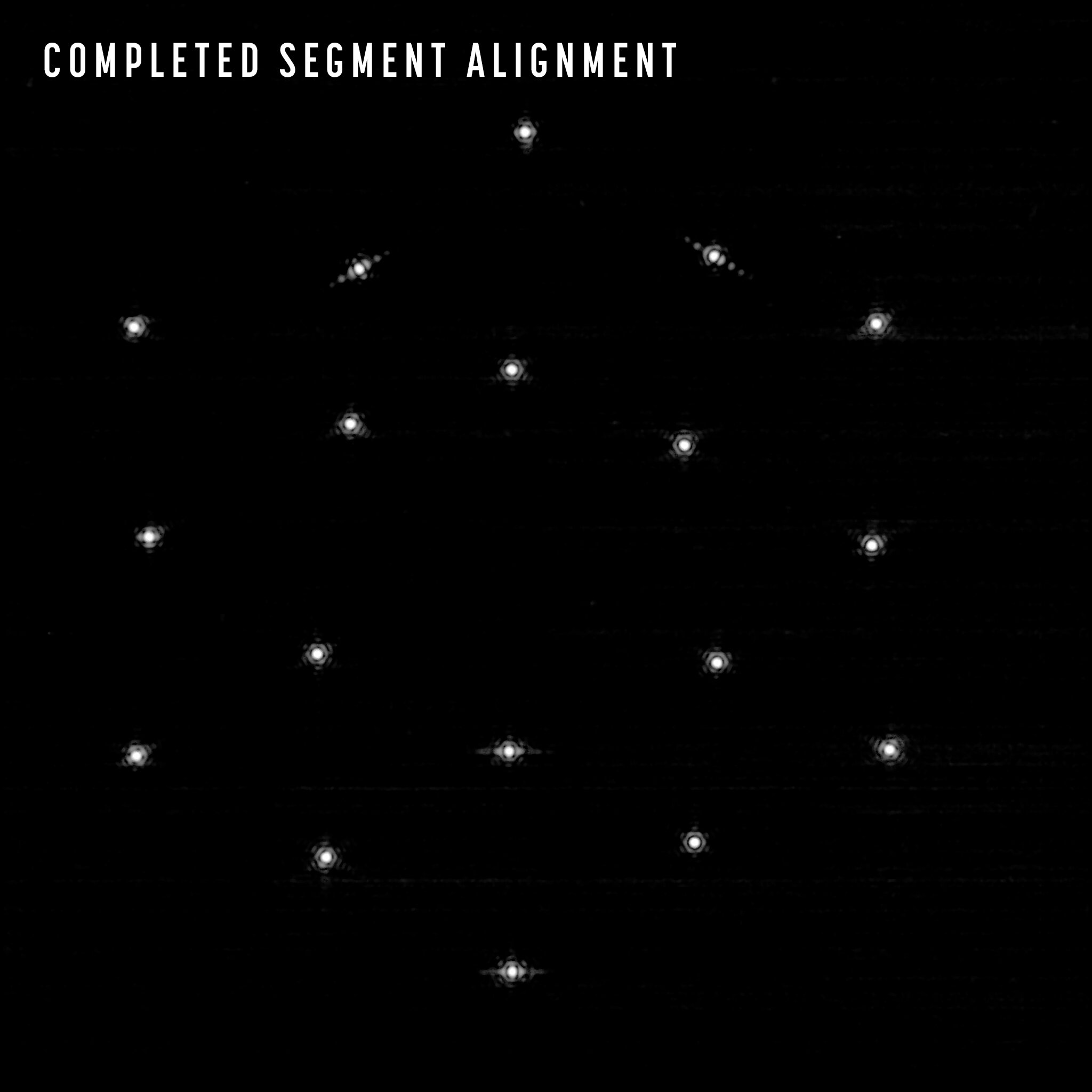Webb's journey to becoming a focused observatory continues. The team has completed the second and third phases of mirror alignment, out of a total of seven. After these steps, known as Segment Alignment and Image Stacking, are completed, the team will begin making minor modifications to the placements of Webb's mirrors. After rearranging 18 dispersed dots of starlight into Webb's trademark hexagonal arrangement, the researchers enhanced the picture of each mirror segment by making modest tweaks, as well as adjusting the orientation of Webb's secondary mirror. The completion of this procedure, known as Segment Alignment, was a critical step before overlapping the light from all of the mirrors so that they could act in tandem.
After achieving Segment Alignment, the focused dots reflected by each mirror were layered on top of one another, sending photons of light from each segment to the same spot on NIRCam's sensor. During this Image Stacking method, the researchers triggered sets of six mirrors at a time and instructed them to repoint their light to overlap until all dots of starlight overlapped.
We still have work to do, but we're more satisfied with the results we're seeing, said Lee Feinberg, optical telescope element manager for Webb at NASA's Goddard Space Flight Center. Years of preparation and testing are paying off, and the team is eager to see what the next few weeks and months bring.
Although Image Stacking concentrated all of a star's light on NIRCam's detector, the mirror segments still function as 18 tiny telescopes rather than one large one. The segments must now be aligned with an accuracy less than the wavelength of the light.
The team is now at the fourth step of mirror alignment, known as Coarse Phasing, in which NIRCam is utilized to record light spectra from 20 different mirror segment pairings. This assists the team in identifying and correcting vertical displacement between mirror parts, as well as minor height variances. In the next weeks, the solitary dot of starlight will become more crisper and more concentrated.




0 Comments